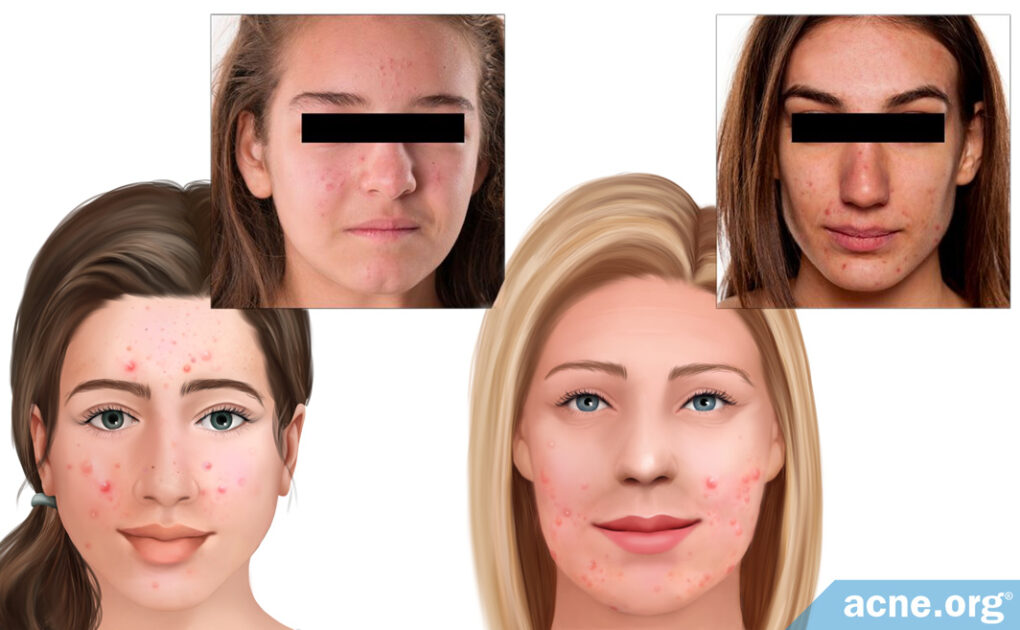Males Are More Affected as Teens, Whereas Females Are More Affected as Adults, and All Adults Tend to See Breakouts More Around the Chin and Jawline

The Essential Info
Age: Adolescent acne, often referred to as “teen acne,” affects people up to 25 years old, while adult acne affects people over 25 years old.
Prevalence: Teen acne is more common than adult acne.
Gender: Teen acne is more common in males, while adult acne is more common in females.
Location of Breakouts: Teen acne often includes breakouts on the entire face, whereas in adult acne, breakouts are more common on the lower half of the face (cheeks, chin, and jawline).
What They Have in Common: Teen and adult acne are both hormonal conditions, are passed down in a family through genetics, and may be affected by diet.

The Science
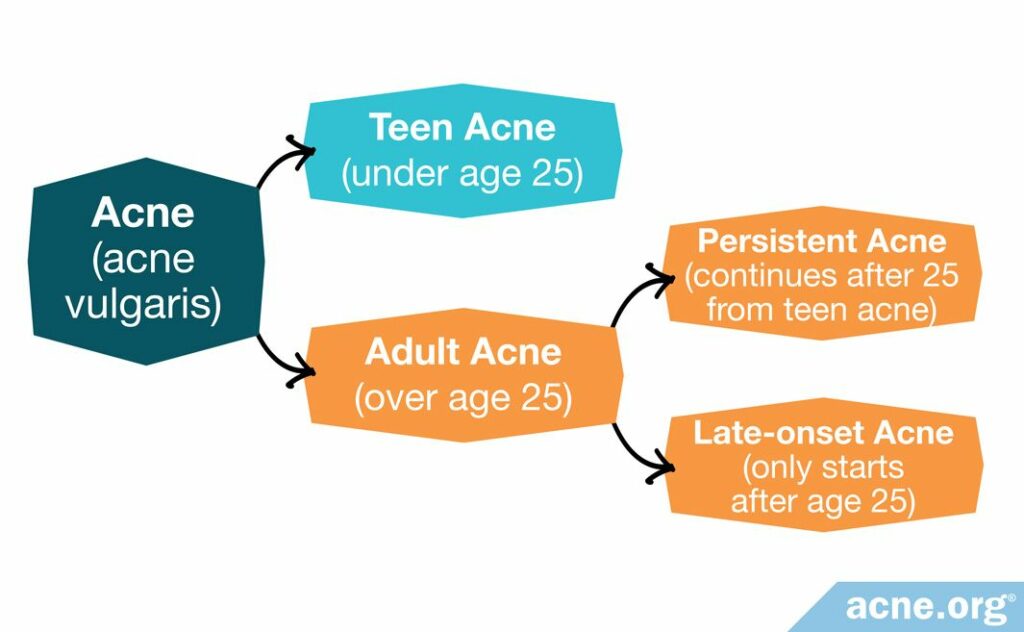
Acne in teens and adults is the same disease: acne vulgaris. However, depending on the age of the person with acne, it is classified as either:
- Adolescent or teen acne, which occurs in people under 25 years of age.
- Adult acne, which occurs in people over 25 years of age, and can be either persistent or late-onset.
Persistent acne: If teen acne never goes away and continues past the age of 25, it becomes adult acne and is called persistent acne.
Late-onset acne: If acne shows up spontaneously after the age of 25, it’s called late-onset acne.1,2
Although teen and adult acne are the same disease, teen acne is much more common than adult acne.

A comprehensive study of over 17,000 Chinese acne sufferers published in 2012 in the journal Acta Dermato-Venereologica found that only 25% of all acne cases were adult acne, most of which were persistent.3
Differences in Symptoms
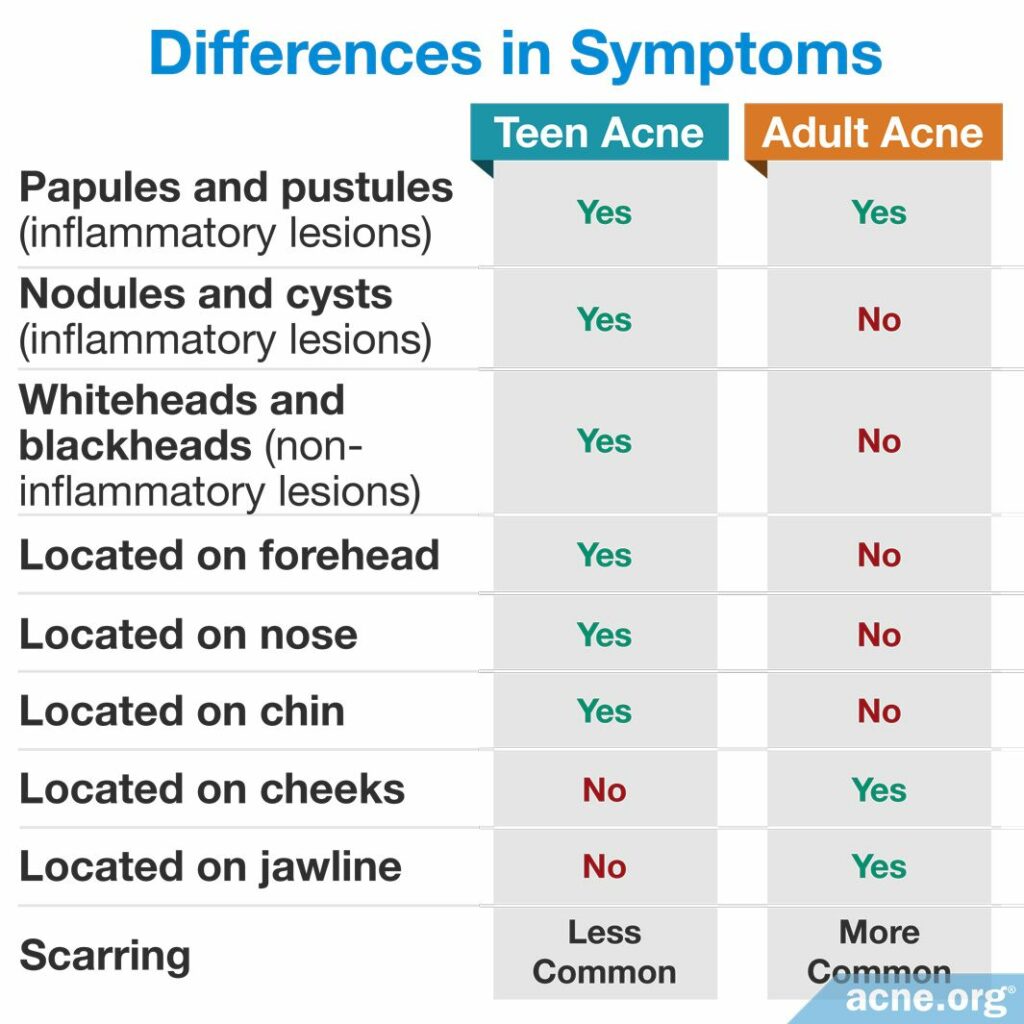
Teen and adult acne differ in type of breakouts, location of breakouts, and presence or absence of scarring.
Teen acne:
- Type of breakouts: A combination of inflammatory lesions (papules, pustules, nodules, and cysts)4 and non-inflammatory lesions (whiteheads and blackheads).
- Location of breakouts: Usually on the forehead, nose, and chin.4
- Scarring: Less common in teen acne than in adult acne.5
Adult acne:
- Type of breakouts: Mainly inflammatory lesions (papules and pustules).5
- Location of breakouts: Usually on the cheeks and lower part of the face, including the chin and jawline.5 Also, there are more breakouts around the mouth, on the neck, chest, and on the back in adult acne than in teen acne.6
- Scarring: More common in adult acne, perhaps because breakouts are mainly inflammatory, and because adult acne is more resistant to treatment and takes longer to heal.5
Expand to read details of studies
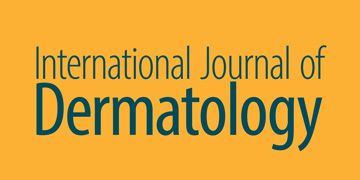
A study conducted in Korea and published in 2011 in the International Journal of Dermatology found that when teens have their first acne breakouts, these occur in the same locations for males and females, except that teen males have more acne on the neck and chest.6
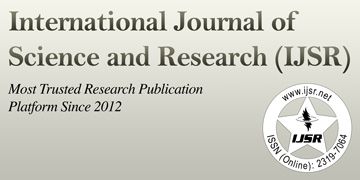
A study of adult acne sufferers aged 26 to 45 in India, which was published in 2013 in the International Journal of Science and Research, described the most common sites of acne in adults:
The most common site of involvement was cheeks 80% followed by chin 66%, [jaw] 52%, forehead 48% and nose 16%. [Acne on the trunk (torso) of the body] was rare and was seen in only 6% of the patients. Nature of the skin was dry in 54% and oily in 46%.7
Differences Between Sexes
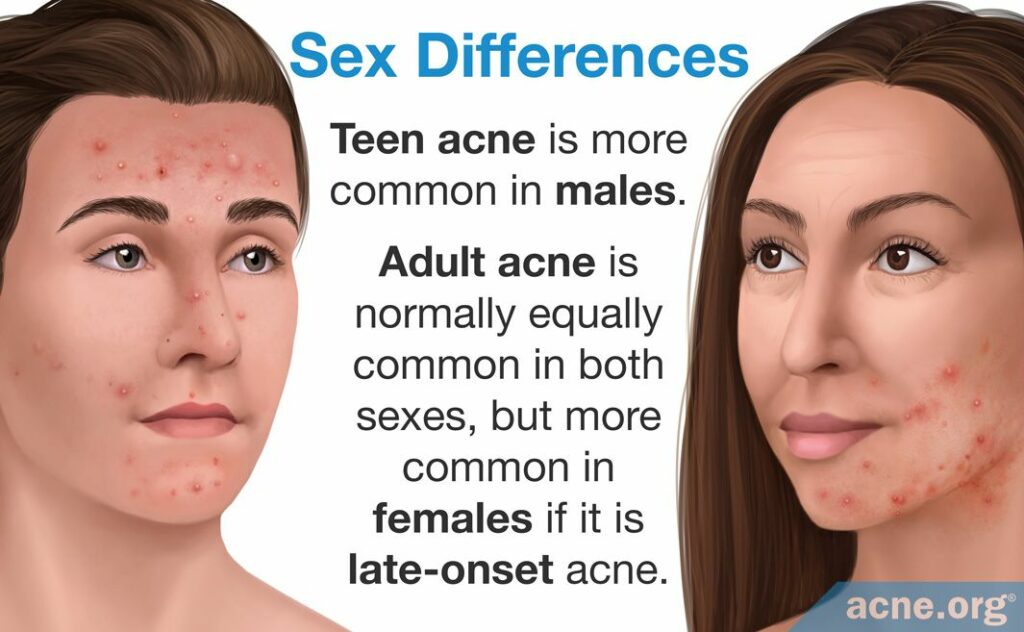
- Teen acne: More common in males.
- Adult acne: Normally equally common in both sexes, but more common in females if it is late-onset acne.
Expand to read details of studies

According to the same large Chinese study discussed above, from the late teens to the early twenties, more males than females have acne. After age 30, however, more females than males have acne.3
The researchers also found that males and females are equally affected by persistent acne, but the majority of late-onset acne sufferers are women. Two other studies which were mentioned above–one conducted in Korea and the other in India–also agree that when we look at adult acne overall, it is more likely to affect women than men.3,6,7
Differences in Causes
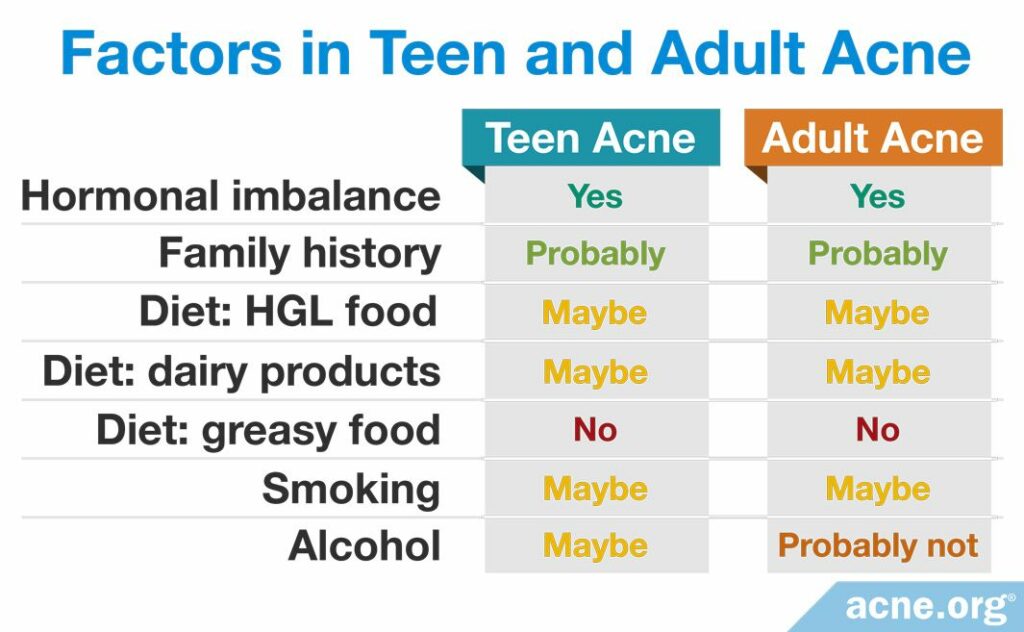
Since teen and adult acne are different manifestations of the same disease, they both arise from hormonal imbalances. Teen and adult acne are also both more likely to arise if the sufferer has a family history of acne, and both teen and adult acne may be made worse by poor diet.
Smoking and alcohol consumption show a much weaker potential connection.3,8,9
Let’s take a closer look at each potential cause, starting with hormonal imbalance.
Hormonal imbalance
In both teens and adults, an increase in the level of androgens (male hormones present in both males and females) in the body must occur for acne to form. This increase in androgens may be caused by:
- Teen acne:
Males and females: Puberty and/or poor diet.
Females only: Poly-cystic ovary syndrome or pregnancy. - Adult acne:
Males and females: Ongoing hormonal imbalance and/or poor diet.
Females only: Pregnancy or poly-cystic ovary syndrome.
Here’s how androgens lead to acne: Increased androgen levels stimulate the growth of skin oil glands under the skin, resulting in increased production of skin oil (sebum), which can lead to a cascade involving acne bacteria (C. acnes), inflammation, and ultimately acne.10
Family history
- Teen acne: If your mother and/or father had acne, you’re more likely to suffer with it, and to develop it earlier.
- Adult acne: If your mother and/or father had acne, you’re more likely to suffer with adult acne.
The following British Journal of Dermatology article sums it up:
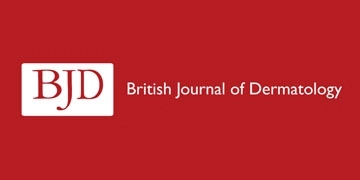
Both teens and adults are much more likely to develop more severe acne, and teens are likely to develop acne earlier, if they have at least one first-degree family relative (a parent, sibling, or child) with acne. According to an overview article published in 2012 in the British Journal of Dermatology, “Acne occurs earlier and is more severe in those with a positive family history.”11
Numerous studies confirm that family history is one of the main risk factors for having acne either as a teen or adult.12-14 For instance, one study found that a teen whose mother and father both had acne is 8 times more likely to develop acne compared to someone whose parents did not have acne.12 Another study found that the vast majority of adults with acne have a family history of acne.13
Expand to read details of studies
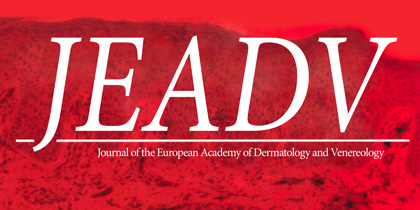
A study published in the Journal of the European Academy of Dermatology and Venereology in 2018 tried to tease out risk factors for acne by surveying 10,521 young people across 7 different countries in Europe. Since the study participants were between the ages of 15 and 24, this study was technically looking at teen acne. The researchers found that a history of acne in one parent increased the risk of having teen acne 2.7 times, while a history of acne in both parents increased the risk of developing teen acne 8 times.12
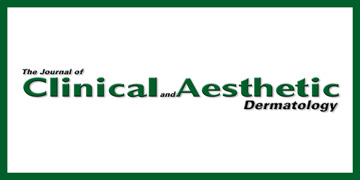
Another study published in the Journal of Clinical and Aesthetic Dermatology in 2018 found that a family history of acne was a key risk factor for suffering from acne after the age of 25. The researchers found that among 454 patients with adult acne, 70.9% had a family history of acne. They wrote, “Our results agree with the literature data on adult acne….[that] family history represents one of the main risk factors.”13

Finally, a systematic review published in Scientific Reports in 2020 further confirmed the strong correlation between family history and acne. A systematic review is a thorough summary of existing research on a particular topic, so it provides the highest level of scientific evidence. In this case, the review authors combed through 35 studies on risk factors affecting acne. Taking all the evidence together, they concluded that people who had at least one parent with a history of acne were, on average, 2.91 times more likely to develop acne themselves compared to people whose parents had never had acne.14
If all that evidence weren’t enough, several research groups have taken another approach to investigating the role of genetic (hereditary) factors in both teen and adult acne by studying pairs of twins at different ages. Identical twins are exactly the same genetically, whereas non-identical twins are genetically similar as a pair of siblings who are not twins.
Expand to read details of studies
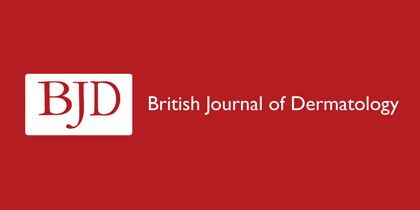
One study of twins, published in 1988 in the British Journal of Dermatology, compared production of sebum and severity of acne in teens 12 – 18 years old.15 The researchers found the following.
- Identical twins: Same rates of sebum production, different degrees of acne severity
- Non-identical twins: Different rates of sebum production, different degrees of acne severity
The authors concluded that genetic factors control sebum production, since genetically identical twins displayed essentially the same rate of sebum production. However, since even genetically identical twins showed different degrees of acne severity, the researchers deduced that environmental factors must also affect the development of acne lesions.15

Another study on teens, published in 2005 also in the British Journal of Dermatology, compared the severity of acne in 778 pairs of twins.16 Each teen was examined at three different ages:
- Age 12: Checked for acne on the face, chest, and back
- Age 14: Checked for acne on the face, chest, and back
- Age 16: Checked for acne on the face
The authors reported that severity of acne at all sites and ages was strongly influenced by genetic factors, but was also affected by environmental factors. Genetics played a particularly large role in:
- Acne on the back
- Acne on the face in 14-year-old girls16
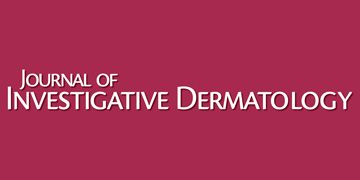
A third twin study published in 2002 in the Journal of Investigative Dermatology examined the impact of genetic and environmental factors on adult acne in the United Kingdom. The researchers examined 458 pairs of identical and 1099 pairs of non-identical twins, all women with an average age of 46 years. The authors concluded that adult acne possesses a strong genetic basis, since the vast majority of the differences in acne severity between different people in the study could be explained by family history.17
Diet
In both teens and adults, diet is the third most frequently implicated factor by scientists in acne development and severity.9 However, research is still trickling in, and no firm conclusions can yet be made.
Diet suspect #1: Food with a high glycemic load
- Teen acne: Sugary foods may increase skin oil (sebum) production and teen acne.
- Adult acne: Sugary foods may increase skin oil (sebum) production and adult acne as well.
For both teens and adults, eating a diet that contains a large amount high glycemic load food may contribute to acne development. Examples of such foods include white bread, white rice, pasta, soda, or candy.
Eating high-glycemic load food increases the production of a hormone called insulin in the body. Because insulin is a “master hormone,” which controls other hormones, an increase in insulin can lead to an increase in male hormones (androgens) in the blood. As discussed above, an increase in androgens leads to increased skin oil (sebum) production and acne.18
Diet suspect #2: Milk
- Teen acne: There might be a weak connection between dairy (particularly milk) and teen acne.
- Adult acne: There might be a weak connection between dairy (particularly milk) and adult acne as well.
The studies performed thus far on dairy and acne are based on questionnaires, which are prone to error, but most do show a correlation between milk and acne.12,18,19 However, interestingly, only one study so far showed a correlation between eating yogurt or cheese and acne in teens and adults.20
Expand to read details of studies
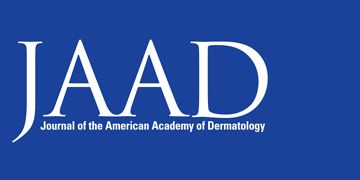
A study published in 2008 in the Journal of the American Academy of Dermatology examined the association between dairy intake and teen acne in boys and girls aged 9 – 15 years. The researchers found a link between drinking skim milk and teen acne. This link was stronger in girls than in boys. The authors suggested that the difference between boys and girls that was responsible for this may be that girls at this age are at a biologically more advanced stage of maturation.21
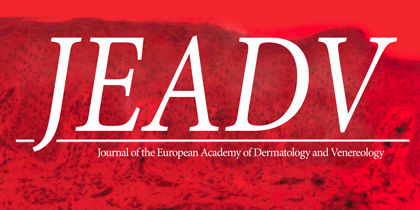
A large study published in the Journal of the European Academy of Dermatology and Venereology investigated the link between lifestyle, including diet, and teen acne. The researchers surveyed over 10,000 young people across 7 European countries. The scientists found that teens with acne consumed more milk, dairy products, and ice cream compared to people without acne. Unlike the previous study, this study found that diet seemed to affect males and females similarly. When it comes to high-glycemic load foods, the researchers noted that teens with acne tended to eat more chocolate and sweets. Chocolate consumption in particular increased the probability of developing acne by 30%. However, as this study relied on an online questionnaire, the authors cautioned that more research is needed to confirm these findings.12
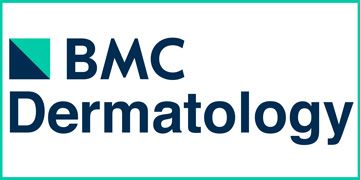
Another study published in 2012 in the journal BMC Dermatology investigated the connection between ingesting dairy products and acne in Malaysian teens and adults aged 18 – 30. The authors found:
- A link between frequency of drinking milk and acne|
- A link between frequency of eating ice cream and acne
- No link between frequency of eating fermented dairy products (yogurt, cheese) and acne19
The researchers reported that young adults who drank milk or ate ice cream at least once per week were four times as likely to have acne as those who did not.19
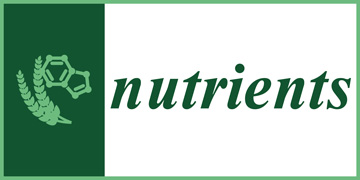
In 2018, the journal Nutrients published a meta-analysis looking at all the available evidence on dairy intake and acne.20 A meta-analysis combines all the data from multiple studies on a given topic and crunches the numbers to come to a conclusion. Therefore, this type of research provides high-quality evidence.
In this meta-analysis, the researchers gathered together data from 14 studies published from 2005 to 2017. These studies included a total of 78,529 participants between the ages of 7 and 30 years old. The researchers found that people who consumed at least one glass of any type of milk per day and people who ate yogurt or cheese were more likely to develop acne compared to those who did not consume milk, yogurt, or cheese. Therefore, the authors of the meta-analysis concluded that dairy products might be linked to acne.20
In addition to the above potential causes of teen and adult acne, smoking and alcohol may also factor in.
Smoking
- Teen acne: Smoking may be linked to teen acne, but the evidence is contradictory.
- Adult acne: Smoking may also be linked to adult acne, but the evidence is contradictory.12,13,21,22,24,25
Expand to read details of studies showing a link between smoking and acne

The large Chinese study mentioned earlier found a link between being a smoker or ex-smoker and having teen acne.3
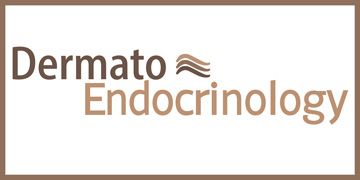
A study published in 2009 in the journal Dermato-Endocrinology examined symptoms of adult acne and any possible correlation with cigarette smoking in women aged 25 – 50 years. The authors found that cases of smoking were strongly linked with adult acne.22
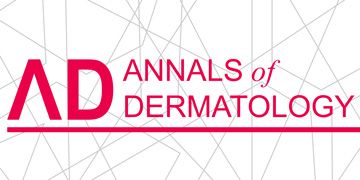
Another study, published in 2014 in the Annals of Dermatology, examined 23 men and 27 women aged 25 – 45 years and also reported a possible link between cigarette smoking and adult acne.23
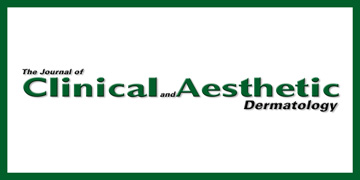
A study published in 2018 in The Journal of Clinical and Aesthetic Dermatology looked at a total of 1,167 people with acne. The researchers concluded that cigarette smoking was more common among adults with acne than among teens with acne. In other words, there might be a stronger connection between smoking and acne in adults than in teens.13
Expand to read details of studies showing no link between smoking and acne

On the other hand, a report published in 2015 in the journal Dermatology investigated the link between smoking and teen acne in French youth aged 15 – 24. The researchers found no evidence that smoking more than 10 cigarettes per day causes teen acne. In fact, their results seemed to suggest that smoking offered some kind of protection against severe acne.24 The authors wrote:
“In comparing the smoking habits of individuals reporting to have acne with those reporting not to have acne, tobacco smoking was associated with no acne. Tobacco smoking seems to impact on acne by helping to prevent severe acne.”24

Similarly, a study published in the Journal of the European Academy of Dermatology and Venereology in 2018 investigated the link between smoking and teen acne in 10,521 young people across 7 different European countries. The researchers found that young people who smoked were less likely to have acne compared to those who didn’t smoke. The researchers wrote, “[S]moking tobacco reduced the probability of acne by approximately 30%.”12

The large Chinese study also found no connection between smoking and having adult acne.3
Alcohol
- Teen acne: Drinking alcohol might be linked with teen acne, but the evidence is limited.
- Adult acne: Drinking alcohol probably does not cause adult acne.
References
- Williams, C. & Layton, A. M. Persistent acne in women: implications for the patient and for therapy. Am J Clin Dermatol 7, 281 – 290 (2006). https://www.ncbi.nlm.nih.gov/pubmed/17007539
- Tangetti, E. A. The role of inflammation in the pathology of acne. J Clin Aesthet Dermatol 6, 27 – 35 (2013). https://www.ncbi.nlm.nih.gov/pmc/articles/PMC3780801/
- Shen, Y. et al. Prevalence of acne vulgaris in Chinese adolescents and adults: a community-based study of 17,345 subjects in six cities. Acta Derm Venereol 92, 40 – 44 (2012). https://pdfs.semanticscholar.org/c638/70a8e25bd12b097dac2791015f013b5cbcca.pdf
- Tom, W. L. & Barrio, R. New insight into adolescent acne. Curr Opin Pediatr 20, 436 – 40 (2008). https://www.ncbi.nlm.nih.gov/pubmed/18622200
- Khunger, N. & Kumar, C. A clinico-epidemiological study of adult acne: Is it different from adolescent acne? Indian J Dermatol Venereol Leprol 78, 335 – 341 (2012). http://www.ijdvl.com/article.asp?issn=0378-6323;year=2012;volume=78;issue=3;spage=335;epage=341;aulast=Khunger
- Suh, D. H. et al. A multicenter epidemiological study of acne vulgaris in Korea. Int J Dermatol 50, 673 – 681 (2011). https://www.ncbi.nlm.nih.gov/pubmed/21595660
- Swathi, G. & Mamatha, S. K. A clinico-epidemiological study of acne in adults. Int J Science Res 11, 822 – 825 (2013). https://www.ncbi.nlm.nih.gov/pubmed/22565434
- Williams, C. & Layton, A. M. Persistent acne in women: implications for the patient and for therapy. Am J Clin Dermatol 7, 281 – 290 (2006). https://www.ncbi.nlm.nih.gov/pubmed/17007539
- Youssef, E. M. & Youssef, E. K. Diet and acne in Upper Egypt. Am J Dermatol Venereol 3, 13 – 22 (2014). https://www.ncbi.nlm.nih.gov/pmc/articles/PMC2836431/
- Dawson, A. L. & Dellavalle, R. P. Acne vulgaris. Br Med J 346, f2634 (2013). https://www.ncbi.nlm.nih.gov/pubmed/23657180
- Bhate, K. & Williams, H. C. Epidemiology of acne vulgaris. Br J Dermatol 168, 474 – 485 (2012). https://www.ncbi.nlm.nih.gov/pubmed/23210645
- Wolkenstein, P., Machovcová, A., Szepietowski, J. C., Tennstedt, D., Veraldi, S. & Delarue, A. Acne prevalence and associations with lifestyle: a cross-sectional online survey of adolescents/young adults in 7 European countries. J Eur Acad Dermatol Venereol 32, 298-306 (2018). https://pubmed.ncbi.nlm.nih.gov/28707712/
- Skroza, N., Tolino, E., Mambrin, A., et al. Adult acne versus adolescent acne: A retrospective study of 1,167 patients. J Clin Aesthet Dermatol 11, 21-25 (2018). https://pubmed.ncbi.nlm.nih.gov/29410726/
- Heng, A. H. S. & Chew, F. T. Systematic review of the epidemiology of acne vulgaris. Sci Rep 10, 5754-5783 (2020). https://pubmed.ncbi.nlm.nih.gov/32238884/
- Walton, S. et al. Genetic control of sebum excretion and acne – a twin study. Br J Dermatol 118, 393 – 396 (1988). https://www.ncbi.nlm.nih.gov/pubmed/2965597
- Evans, D. M. et al. Teenage acne is influenced by genetic factors. Br J Dermatol 152, 579 – 581 (2005). https://www.ncbi.nlm.nih.gov/pubmed/15787839
- Bataille, V. et al. The influence of fenetics and environmental factors in the pathogenesis of acne: A twin study of acne in women. J Investig Dermatol 119, 1317 – 1322 (2002). https://www.ncbi.nlm.nih.gov/pubmed/12485434
- Tsoy, N. O. Effect of milk and dairy products upon severity of acne for young people. World Appl Sci J 24, 403 – 407 (2013). https://pdfs.semanticscholar.org/fbbc/8bbfecee0b2efbfb2d7579550e8db6a068ab.pdf
- Ismail, N. H., Manaf, Z. A. & Azizan, N. Z. High glycemic load diet, milk and ice cream consumption are related to acne vulgaris in Malaysian young adults: a case control study. BMC Dermatol 12, 13 (2012). https://pubmed.ncbi.nlm.nih.gov/22898209/
- Juhl, C. R., Bergholdt, H. K. M, Miller, I. M., Jemec, G. B. E., Kanters, J. K. & Ellervik, C. Dairy intake and acne vulgaris: A systematic review and meta-analysis of 78,529 children, adolescents, and young adults. Nutrients 10, 1049-1062 (2018). https://pubmed.ncbi.nlm.nih.gov/30096883/
- Adebamowo, C. A., Spiegelman, D., Berkey, C. S. et al. Milk consumption and acne in teenaged boys. J Am Acad Dermatol 58, 787-793 (2008). https://pubmed.ncbi.nlm.nih.gov/18194824/
- Capitanio, B., Sinagra, J. L., Ottaviani, M., Bordignon, V., Amantea, A. & Picardo, M. Acne and smoking. Dermatoendocrinol 1, 129-135 (2009). https://pubmed.ncbi.nlm.nih.gov/20436880/
- Yang, Y. S., Lim, H. K., Hong, K. K. et al. Cigarette smoke-induced interleukin-1 alpha may be involved in the pathogenesis of adult acne. Ann Dermatol 26, 11-16 (2014). https://pubmed.ncbi.nlm.nih.gov/24648681/
- Wolkenstein, P., Misery, L., Amici, J. M. et al. Smoking and dietary factors associated with moderate-to-severe acne in French adolescents and young adults: results of a survey using a representative sample. Dermatology 230, 34-39 (2015). https://pubmed.ncbi.nlm.nih.gov/25413494/
- Dréno, B, Bettoli, V., Araviiskaia, E., Sanchez Viera, M. & Bouloc, A. The influence of exposome on acne. J Eur Acad Dermatol Venereol 32, 812-819 (2018). https://pubmed.ncbi.nlm.nih.gov/29377341/
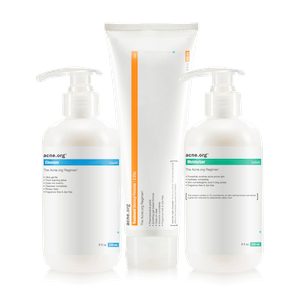 Acne.org Products
Acne.org Products